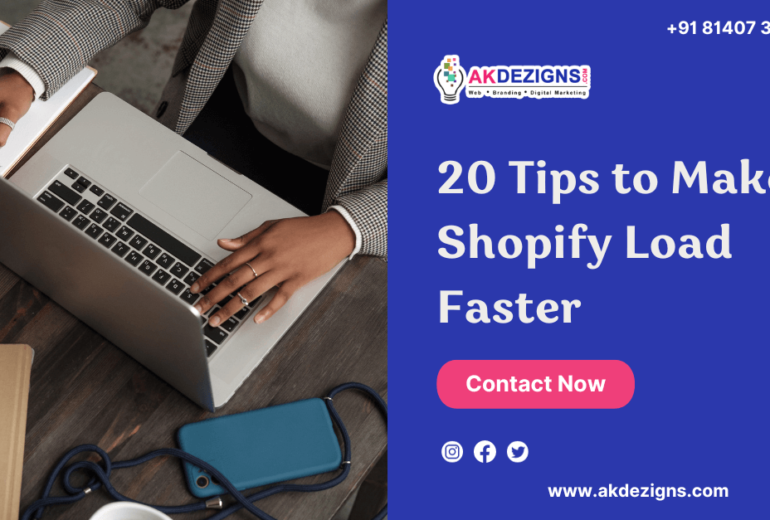Shopify is one of the most popular e-commerce platforms available today. It’s user-friendly, customizable, and provides plenty of features to help online store owners create a professional and effective online presence. However, one of the most critical aspects of any online store is its speed. A slow website can cause customers to leave and can harm your store’s search engine rankings. In this article, we’ll look at the top 10 tips to improve your Shopify store speed.
Optimize your images
One of the most significant factors affecting your website’s speed is image optimization. Large images can take a long time to load and can significantly slow down your website. You can use image optimization tools like Kraken.io, TinyPNG, or ShortPixel to compress your images without losing quality.
Use a Content Delivery Network (CDN)
A Content Delivery Network (CDN) can help to distribute your website’s content across multiple servers worldwide, allowing your users to access your site more quickly. Shopify provides built-in support for CDNs, and services like Cloudflare, Fastly, or Akamai can all help to improve your website’s speed.
Minimize your code
Reducing the size of your code can help to speed up your website. This can be achieved by minimizing your HTML, CSS, and JavaScript files. You can use tools like HTMLMinifier, CSSNano, and UglifyJS to help you minimize your code.
Use a fast theme
Your Shopify theme can also affect your website’s speed. It’s important to choose a theme that is optimized for speed. You can use Shopify’s Theme Store to find a fast and responsive theme. Also, avoid using too many themes or apps, as they can slow down your website.

Enable compression
Enabling compression can help to reduce the size of your website’s files, making them load faster. You can enable compression by adding code to your .htaccess file. Alternatively, you can use a compression app from the Shopify App Store.
Reduce HTTP requests
Every time your website loads, it sends an HTTP request to your server for each file that needs to be loaded. The more requests your website makes, the slower it will load. You can reduce the number of HTTP requests by combining files where possible, using CSS sprites, and removing unnecessary files.
Optimize your mobile experience
Mobile optimization is crucial for website speed, as mobile users are less patient when it comes to slow-loading websites. Shopify provides a responsive design by default, but you should still optimize your website for mobile users by using smaller images, reducing the number of elements on the page, and using a mobile-friendly font.
Remove unused apps and code
Unused apps and code can slow down your website. If you’re not using an app, remove it. You can also review your code and remove any unused code, as it can affect your website’s speed.

Use lazy loading
Lazy loading is a technique that delays the loading of non-critical resources on your website. This can help to speed up your website’s initial load time. You can use a lazy loading app from the Shopify App Store to implement this technique on your website.
Monitor your website’s speed regularly
Finally, it’s essential to monitor your website’s speed regularly to identify any issues and make improvements. You can use tools like Google PageSpeed Insights, GTmetrix, or Pingdom to monitor your website’s speed and receive recommendations on how to improve it.
In conclusion, website speed is crucial for any e-commerce business. By following these ten tips, you can improve your Shopify store’s speed and provide a better user experience for your customers. Remember to optimize your images, use a CDN, minimize your code, choose a fast theme,





